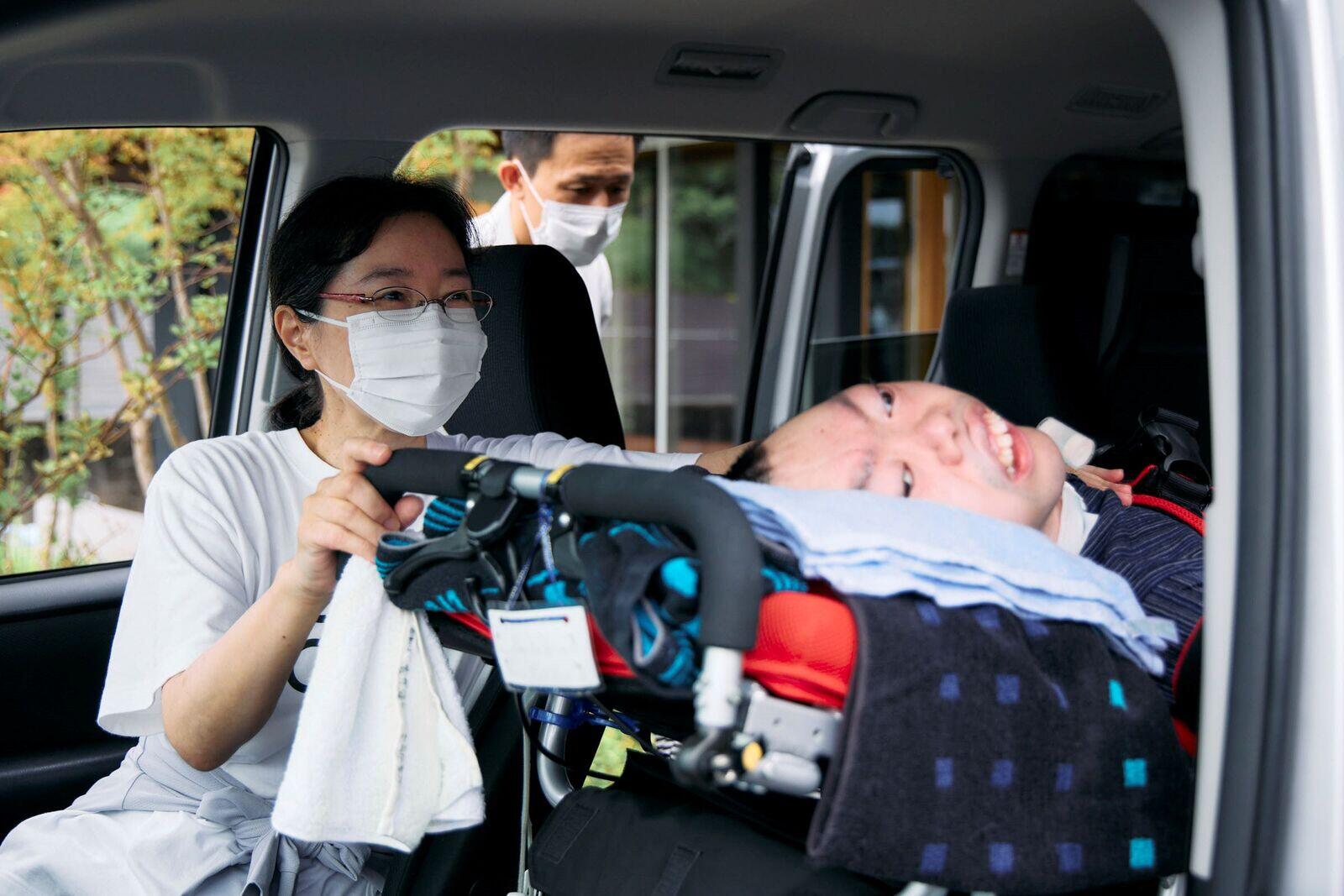
Imagine a driver drenched in a cold sweat as she searches for a place to stop to provide the care her child urgently needs to breathe. To serve the very real needs of such families, Toyota is urgently developing a special buggy.

At a final review session for Toyota’s new business creation program, one initiative brought the entire judging panel to tears. This is not just a story of assistive mobility; it is a tale of family love.
Sleepless nights and early morning medications
Japan has a special designation for children who require constant medical care.
These individuals need extended hospitalization from birth, followed by round-the-clock care at home to prevent their airways from becoming clogged with phlegm. There are an estimated 20,000 such children across the country, a number that has doubled in the past decade.

Taichi Goto, a project manager in the New Business Planning Division, shared his personal experience.
Taichi Goto, Project Manager, New Business Planning Division

My son was born with an incurable congenital condition and spent the first 18 months of his life in intensive care without coming home once. When he eventually did, he was hooked up to a ventilator, and we began caring for him.
This in-home care was grueling, requiring constant checks to ensure the ventilator did not detach and the suctioning of his airways every 15 to 30 minutes to prevent phlegm buildup. At night there were nutritional injections and equipment alerts, followed by early morning medications.
You can’t get proper sleep. I couldn’t believe such a world existed.
Yet despite all that, as a parent, I wanted to raise him like other children. I wanted him to play at the park, go shopping, and enjoy life.

However, moving all the medical equipment, oxygen tanks, and other things we needed to care for him made outings difficult. I became keenly aware of how tough life is when you can’t get around.
Many children with disabilities commute to special needs schools by bus. For children requiring constant medical care, however, these buses may not be an option.
To ride the school bus, a nurse must accompany them. Yet, amid a shortage of nursing staff, the reality is that sleep-deprived parents take their children to and from school as care duties allow.
“If I’m driving and hear the monitor alert go off because phlegm has built up and he can’t breathe, I break out in a cold sweat while searching for a place to stop,” says Kuniko Takahashi, a resident of Miyazaki Prefecture. She cares for Kotaro, who was born with severe asphyxia, which left him bedridden with cerebral palsy.

The heavy burden of nursing care falls mostly on mothers. With it comes chronic sleep deprivation and near-constant stress about the decades of demanding care ahead...
The need to stay with their kids stops many parents from working outside the home. An astonishing 40.8% of these families say they cannot leave children unsupervised even for five minutes*.
*From Mitsubishi UFJ Research and Consulting (2020) “Survey on the Lifestyles of Children Requiring Constant Medical Care and Their Families”
Detecting breathing difficulties
Children requiring constant medical care often get around by riding in special buggies. Resembling large strollers, these vehicles can carry ventilators and other medical equipment.
When traveling by car, these buggies are loaded into the rear, but this makes it difficult for drivers to check on children lying in a prone position. Despite the risk of their airways becoming blocked, at present, there is no practical solution.

In response, Toyota is rushing development on a new buggy. As shown below, a key feature is the buggy’s orientation, which places the child’s head at the front of the vehicle.

In addition to developing the buggy, vehicle modifications are also required, but together, they enable a driver to monitor their child’s condition and provide medical care upon stopping.
As part of the development process, Toyota has held more than 500 discussions with families, medical professionals, public transportation operators, and government agencies around Japan. Kuniko Takahashi, who continues to care for Kotaro, explained her situation.
When he was small, I would pick him up and put him in the passenger seat so I could easily check on him while driving, but now he weighs 30 kg. Four years ago, I stumbled and dropped him, and since then, we have gone out far less. We no longer have outings just for fun.
She hopes the new buggy might “allow us to contemplate family outings.”

However, the development path has been far from straightforward...

